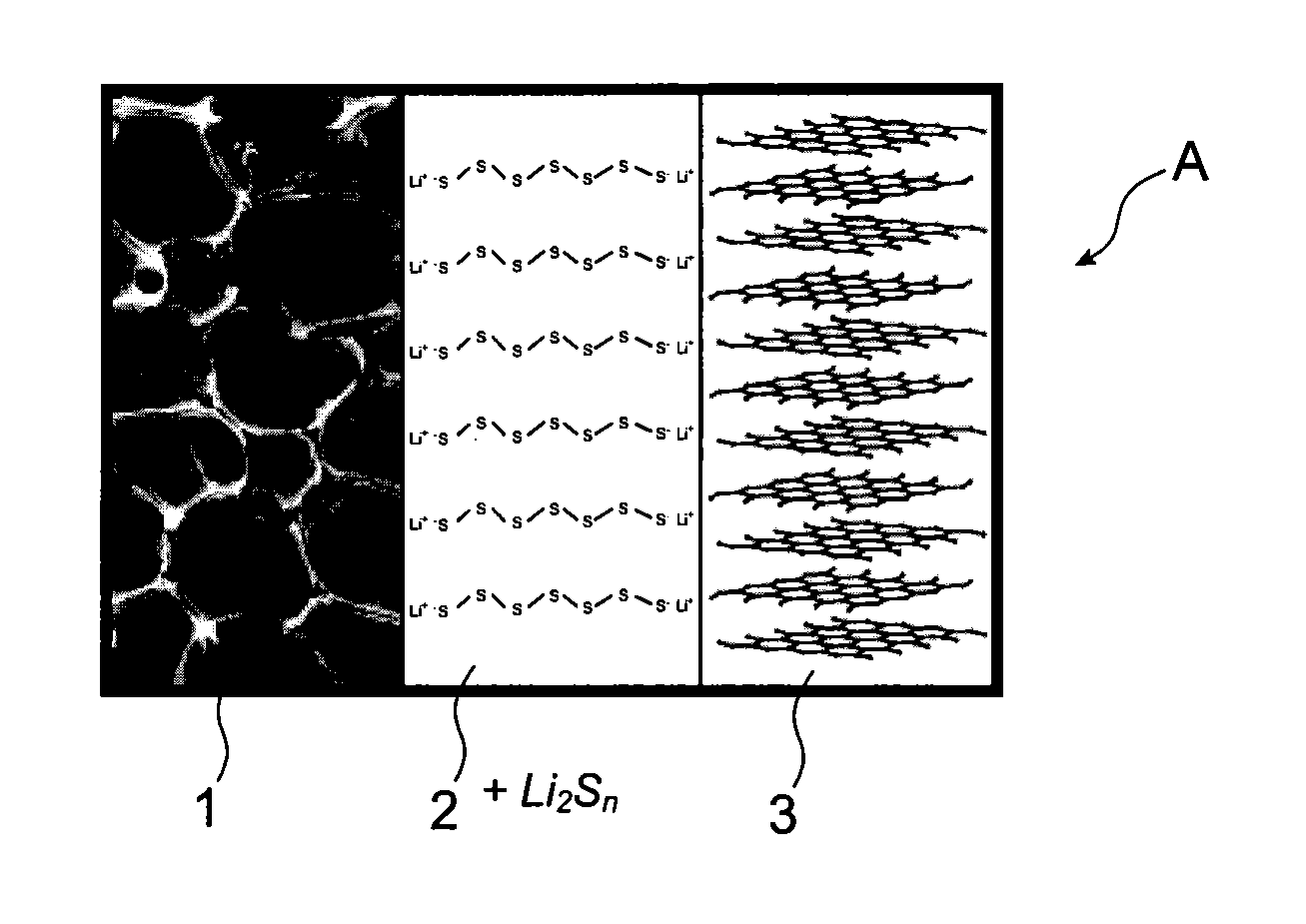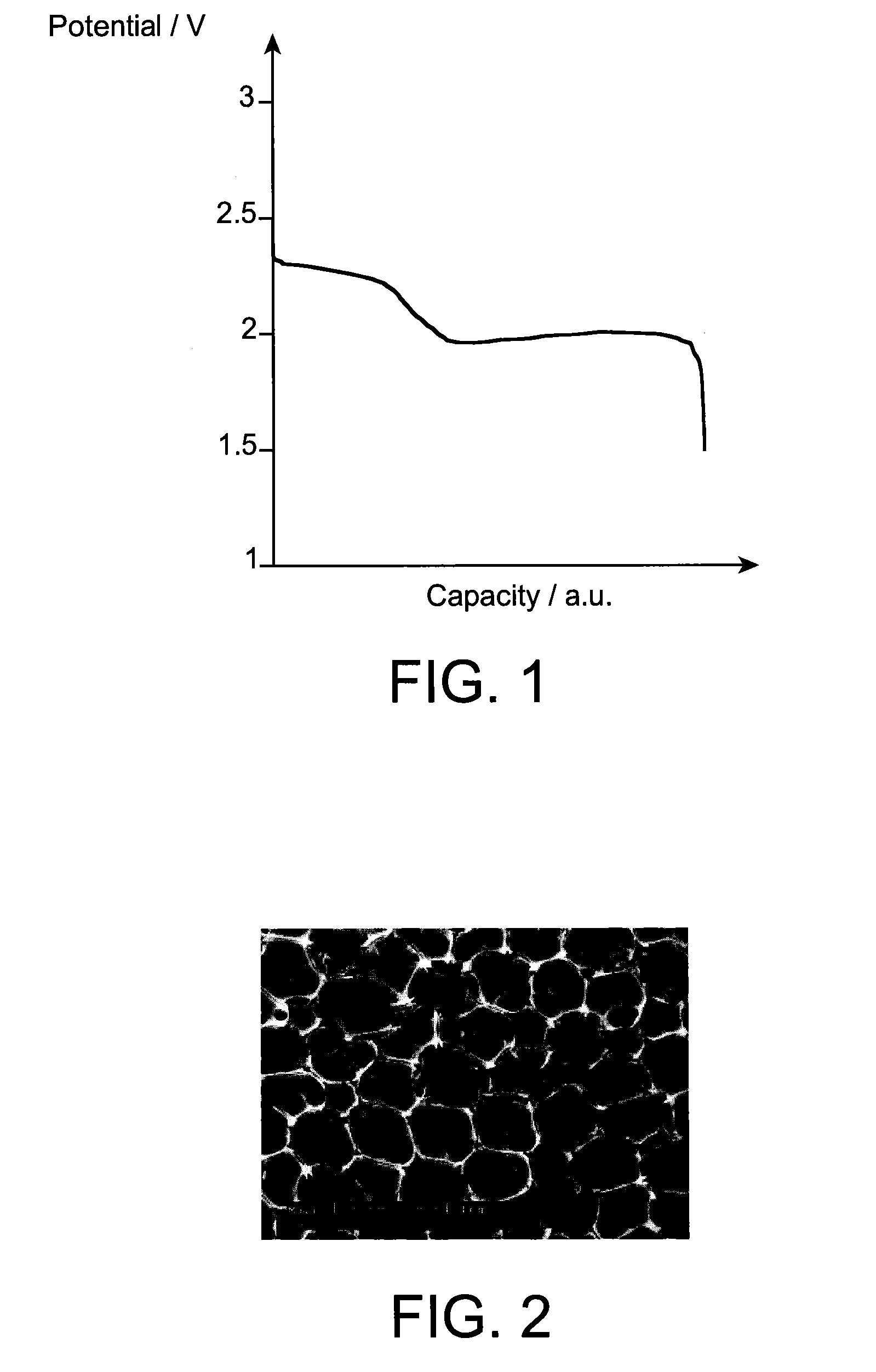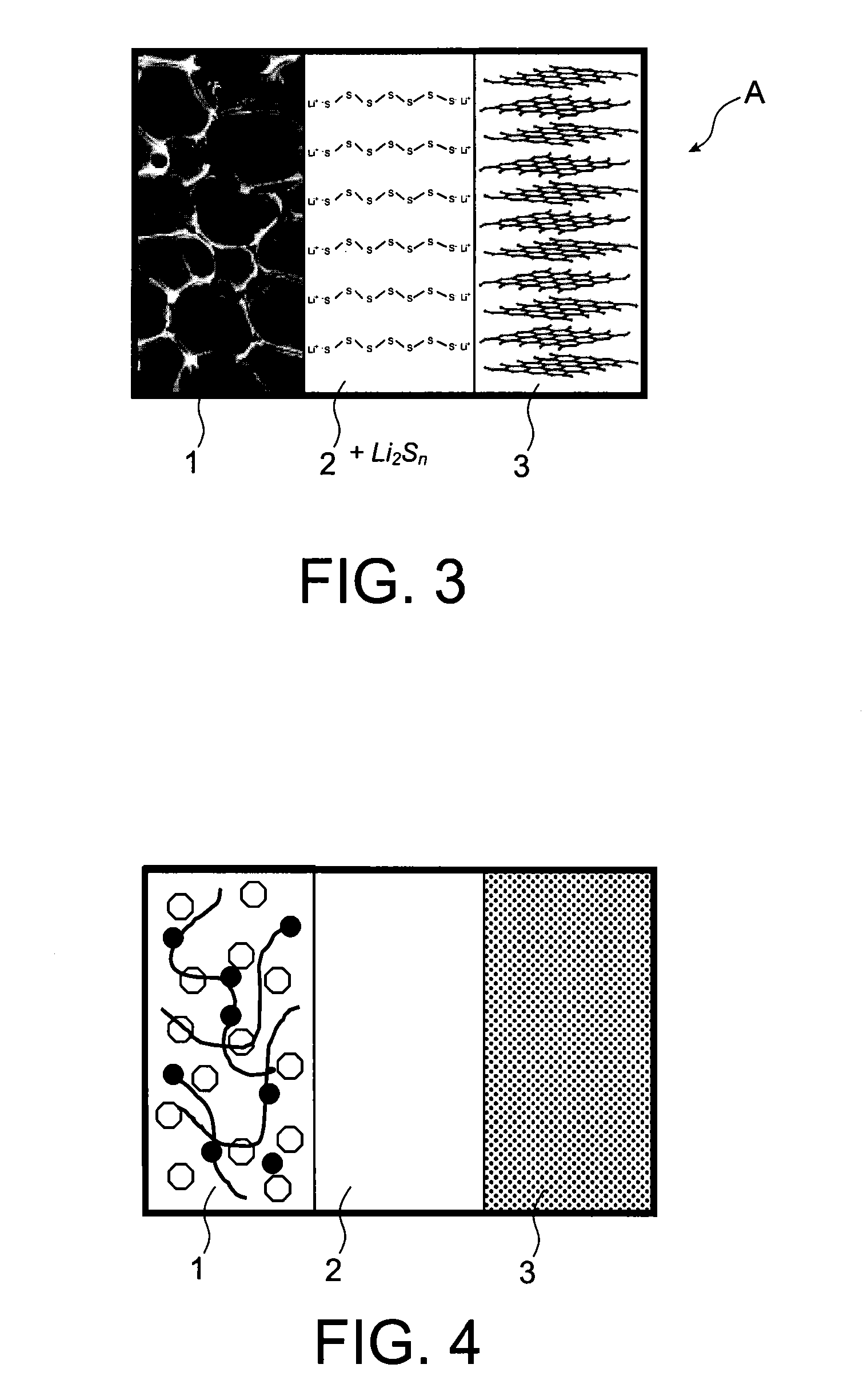Lithium-sulphur (li-s)-type electrochemical battery and production method thereof
- Summary
- Abstract
- Description
- Claims
- Application Information
AI Technical Summary
Benefits of technology
Problems solved by technology
Method used
Image
Examples
embodiment examples 1 to 4
According to the Invention
example 1
[0081]A sulphur containing electrolyte is made from:[0082]bis(trifluoromethanesulphonyl)imide lithium salt (LiTFSI, marketed by the firm Aldrich);[0083]1,3-dioxolane solvent (DIOX, marketed by the firm Aldrich);[0084]tetraethylene glycol dimethyl ether solvent (TEGDME, marketed by the firm Aldrich);[0085]lithium polysulphides Li2S8.
[0086]Said lithium polysulphides are dissolved beforehand at 1 mol·L−1 in TEGDME. Elementary sulphur and lithium metal are dispersed in the solvent to obtain stoichiometry in Li2S8. After a certain heating and stirring time, all of the material has dissolved and reacted to give a viscous, brown coloured solution.
[0087]The electrolyte is then made of mol·L−1 of LiTFSI, 50% by volume of 1 mol·L−1 of Li2S8 in solution in TEGDME and 50% by volume of DIOX. In the end, the compositions are thus the following:[0088]LiTFSI: 1 mol·L−1 [0089]Li2S8: 0.5 mol·L−1 [0090]TEGDME / DIOX: 50 / 50 in volume percent.
[0091]A battery A according to the invention of “button cell” t...
example 2
[0095]A sulphur containing electrolyte is made from:[0096]bis(trifluoromethanesulphonyl)imide lithium salt (LiTFSI, marketed by the firm Aldrich);[0097]1,3-dioxolane solvent (DIOX, marketed by the firm Aldrich);[0098]polyethylene glycol dimethyl ether solvent (PEGDME, marketed by the firm Aldrich);[0099]lithium polysulphides Li2S8.
[0100]Said lithium polysulphides are dissolved beforehand at 1 mol·L−1 in PEGDME. Elementary sulphur and lithium metal are dispersed in the solvent to obtain stoichiometry in Li2S8. After a certain heating and stirring time, all of the material has dissolved and reacted to give a viscous, brown coloured solution.
[0101]The electrolyte is then made of 1 mol·L−1 of LiTFSI, 50% by volume of 1 mol·L−1 of Li2S8 in solution in PEGDME and 50% by volume of DIOX. In the end, the compositions are thus:[0102]LiTFSI: 1 mol·L−1;[0103]Li2S8: 0.5 mol·L−1;[0104]PEGDME / DIOX: 50 / 50 in volume percent.
[0105]A battery A according to the invention of “button cell” type, typicall...
PUM
 Login to View More
Login to View More Abstract
Description
Claims
Application Information
 Login to View More
Login to View More - R&D
- Intellectual Property
- Life Sciences
- Materials
- Tech Scout
- Unparalleled Data Quality
- Higher Quality Content
- 60% Fewer Hallucinations
Browse by: Latest US Patents, China's latest patents, Technical Efficacy Thesaurus, Application Domain, Technology Topic, Popular Technical Reports.
© 2025 PatSnap. All rights reserved.Legal|Privacy policy|Modern Slavery Act Transparency Statement|Sitemap|About US| Contact US: help@patsnap.com



